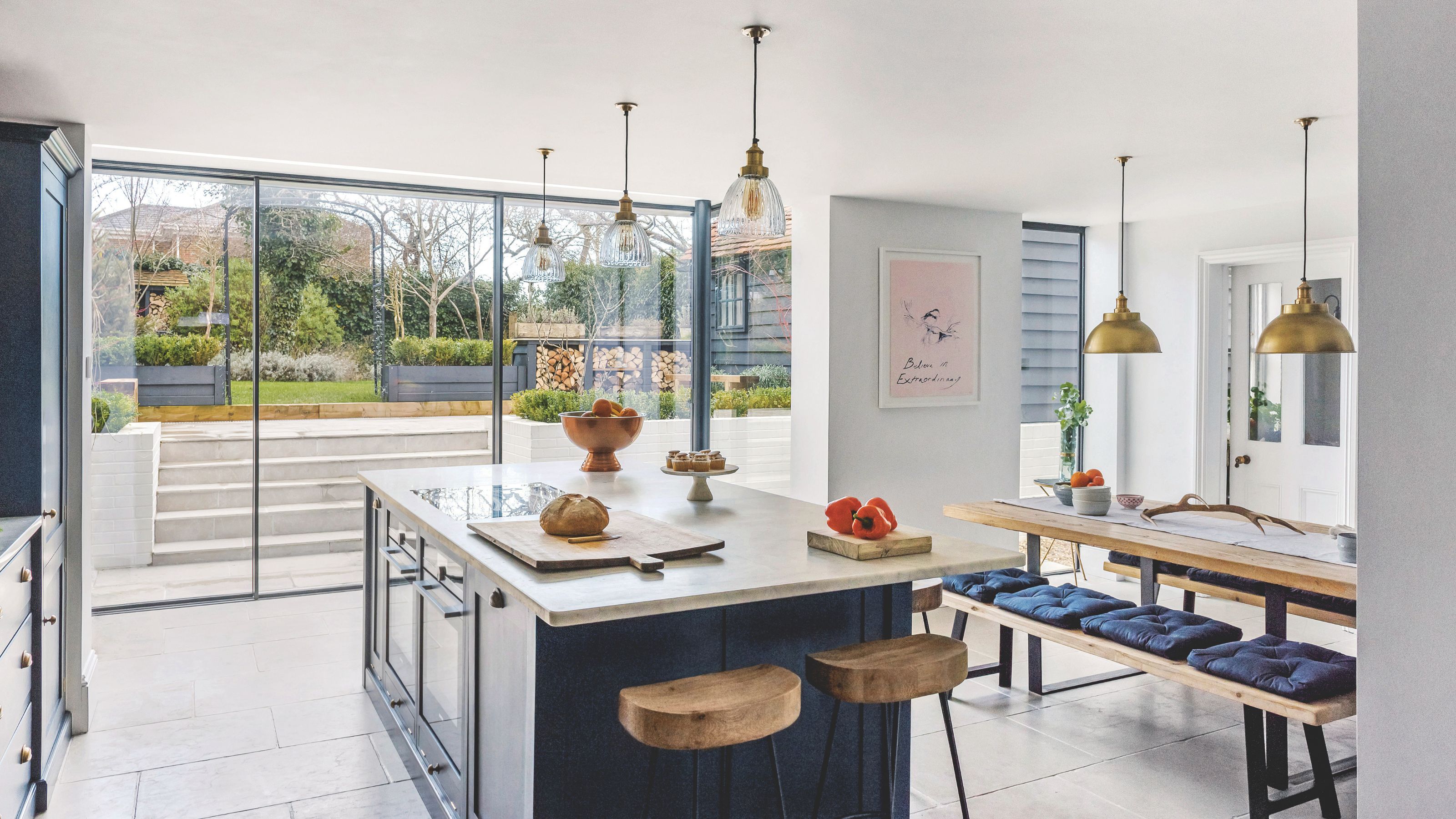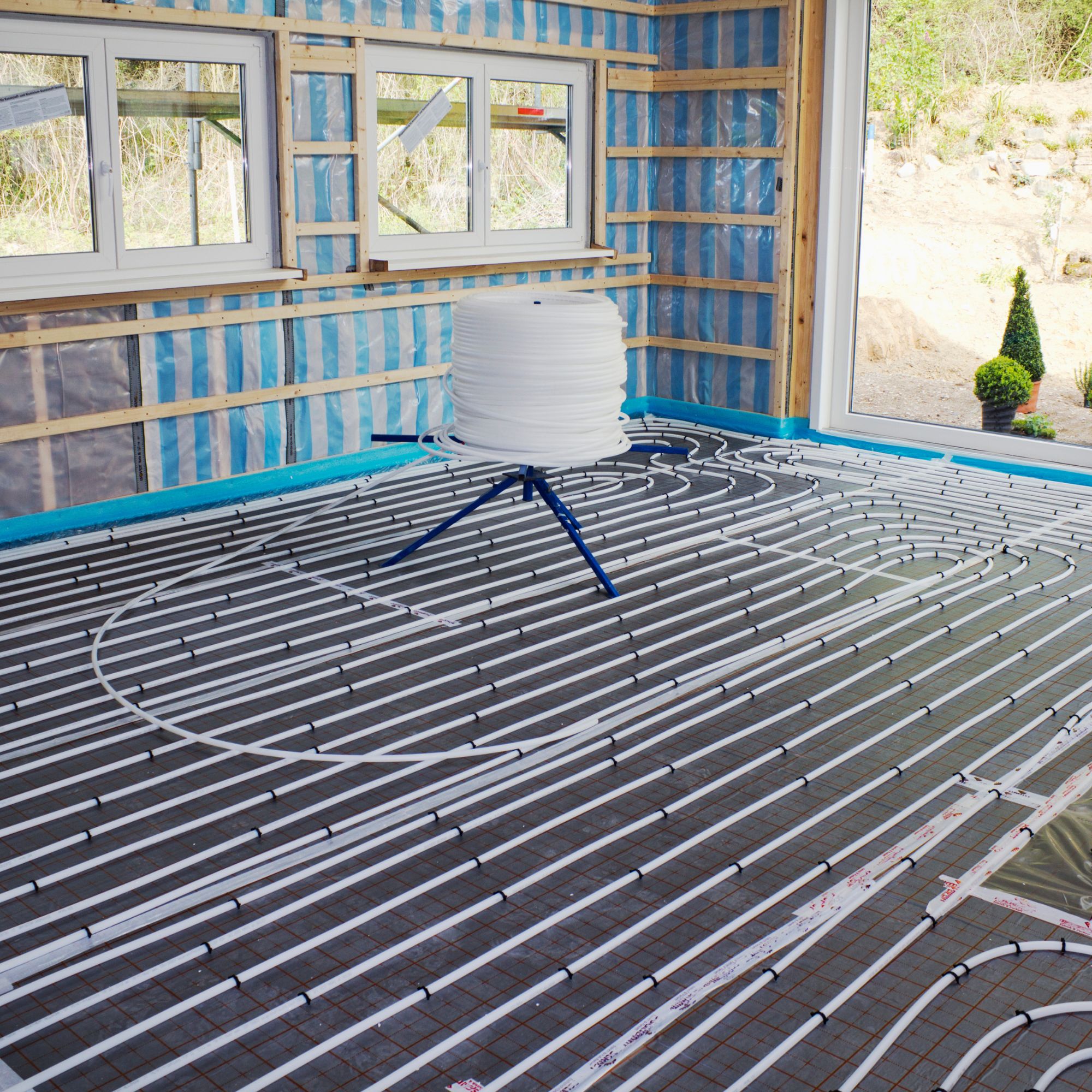How to tell if underfloor heating is a good idea in your home – experts explain the real pros and cons all homeowners should know
The factors to weigh up when choosing underfloor heating, plus the best places to install it


Whether you are extending or taking on a whole-house renovation, you'll need to devote some attention to how you plan on heating the space.
The idea of underfloor heating holds huge appeal for a lot of homeowners. It frees up wall space, offers even and comfortable heat distribution, and can help slash your energy bills. But it can be complicated to retrofit and has a relatively high upfront cost.
So how do you know if underfloor heating is a good idea for your home? Well I asked the experts to clearly explain the pros and cons, and well as highlighting the most suitable applications to help you decide.
Is underfloor heating a good idea?
Whether or not underfloor heating is a good idea for your home will depend on a few different factors:
- Whether you are considering it for a new space, like an extension, or want to retrofit it in your existing home.
- The type of underfloor heating you want (wet or electric).
- How well insulated your home is.
- Your budget.
Taking all of those factors into consideration, you should carefully consider the advantages and drawbacks of underfloor heating in order to make your decision.
Pros of underfloor heating

Underfloor heating can be an ideal solution in spaces where there is a lot of glass, meaning radiators aren't possible, or where you want to free up wall space and maximise your options for furniture placement
- Even heat distribution. A huge plus of underfloor heating is that, if installed correctly, it ensures that heat is distributed consistently across the floor, which then rises to ensure a comfortable temperature without any cold spots.
- Frees up wall space. Whether you're keen to embrace a minimalist look, or want maximum options when it comes to the placement of your furniture, underfloor heating leaves your walls free for whatever you want.
- Energy efficient. 'Traditional radiators need to be heated to a high temperature in order to heat up a room effectively, whereas underfloor heating can run at a much lower temperature whilst still providing the same levels of warmth and comfort,' says heating expert Matthew Jenkins from MyJobQuote.co.uk. This means potentially lower energy bills with wet underfloor heating, especially if combined with a heat pump. This may not be the case for electric underfloor heating however.
- Easy to control. Matthew continues: 'All underfloor heating systems should be controlled by a system-dedicated thermostat, and many are equipped to be compatible with a smart controller. Smart thermostats enhance the energy efficiency of the heating system and can provide programmable heat schedules or automatic heat functionality.' Depending on your set up, you may be able to zone your system to only heat certain rooms, which again can help with energy efficiency.
- Good for those with allergies. In the way radiators heat a room, they can contribute to the distribution of dust which can be problematic to those with allergies or respiratory issues, as Matthew explains: ' Convection heating can serve to aggravate the conditions of those who suffer from asthma and dust allergies due to the currents circulating and distributing a greater level of dust throughout the household.' Fortunately, this isn't the case with underfloor heating.
- Low maintenance. If installed correctly, using quality parts, underfloor heating can be incredibly low maintenance
- Good choice for extensions. If you are adding space to your home with an extension, especially one with a lot of glass and where radiators aren't feasible, underfloor heating is an ideal choice to free up your design ideas.
Cons of underfloor heating

Wet underfloor heating is more easily installed in a new build space, but it's not impossible in an existing home
- Retrofitting in an existing property can be a challenge. 'If you are planning on retrofitting underfloor heating in an older property, you may need to increase the floor height,' reveals Matthew. 'This can be off-putting for some properties where the ceiling heights are fixed.' Electric systems can be an easier retrofit option than wet systems, but may not offer the same cost-effective running costs, so is better for a single room rather than the whole house.
- Higher upfront cost compared to radiators. When it comes to underfloor heating versus radiators, underfloor heating can be more complex to install which can mean higher initial costs. Depending on your budget, it may be better to combine underfloor heating in certain spaces, with radiators in others to get the best of both worlds.
- Electric systems will not be as cost-effective to run. 'Electric underfloor heating tends to be much cheaper to put in but, because it runs on electricity at a similar efficiency to a boiler (heat pumps are much more efficient) and a unit of electricity is four times the price of a unit of gas or heating oil, running costs will be much higher so, unless it’s for a small space (e.g. a small bathroom) or a super-efficient home with very low heating costs, it’s probably best avoided if you’re going to be paying the bills,' says Simon Bones, the founder and CEO of Genous.
- Not suitable for poorly insulated homes. If your home suffers from heat loss due to draughts and ineffective insulation, you'll need to address this before installing underfloor heating. Otherwise all the heat you generate will escape straight outside.
Where's the best place to install underfloor heating?
The best place to install underfloor heating will ultimately depend on your budget, your home and the type of system you choose.
The ground floor tends to be a popular choice for underfloor heating, especially in an extension (where a wet system can be planned in from the design stage to avoid negatively impacting existing ceiling heights). This could be for a number of reasons, including avoiding potentially unsightly radiators, and the tendency towards harder floor coverings that well complement underfloor heating.
Sign up to our newsletter for style inspiration, real homes, project and garden advice and shopping know-how
'Most people run underfloor in their lowest floor and then keep radiators for upper floors,' says Simon Bones, 'but there’s no reason apart from cost and disruption not to put it in upper floors.'
Bathrooms are also favoured, especially as these are often small spaces, with potentially limited wall space for radiators, and for those looking for warmth underfoot.
With many people preferring the comfort of carpet in bedrooms, you might think that underfloor heating is not compatible, but it is possible to have underfloor heating with carpet, provided you opt for a lower tog that won't affect the system's efficacy.
FAQs
What is the lifespan of underfloor heating?
How long your underfloor heating will last will depend on the type of system you have.
Electric systems can last in excess of 25 years, while the pipework for wet systems can last for 50 years or more.
To get the most time out of your underfloor heating system, it is vital that it is correctly installed, any maintenance or servicing is kept on top of, and that you use a reputable company and quality parts.
How you use your underfloor heating will also impact its longevity. Speak to your supplier for the best advice on how to use your specific system as this may also be based on your floorcovering choice.
Is it cheaper to run radiators or underfloor heating
When it comes to running costs, wet underfloor heating can be cheaper than radiators as it works at a lower flow temperature than radiators (around 35 degrees celcius, compared to 70-90 for a radiator).
However if you have an electric system, this is likely to cost more to run due to the price of electricity.
If you aren't adding more space to your home but what to incorporate this type of heating system, it'll be helpful to know what's involved in retrofitting underfloor heating so you can make a final decision about whether it's suitable for your home.

Sarah Handley is Ideal Home’s Renovation Editor. She joined the team full time in September 2024, following three years of looking after the site's home finance content. As well as all things renovation, Sarah also looks after our Home Energy content, which covers all aspects of heating and insulation as well as tips on how homeowners can reduce their energy usage. She has been a journalist since 2007 and has worked for a range of titles including Homebuilding & Renovating, Real Homes, GoodtoKnow, The Money Edit and more.
You must confirm your public display name before commenting
Please logout and then login again, you will then be prompted to enter your display name.